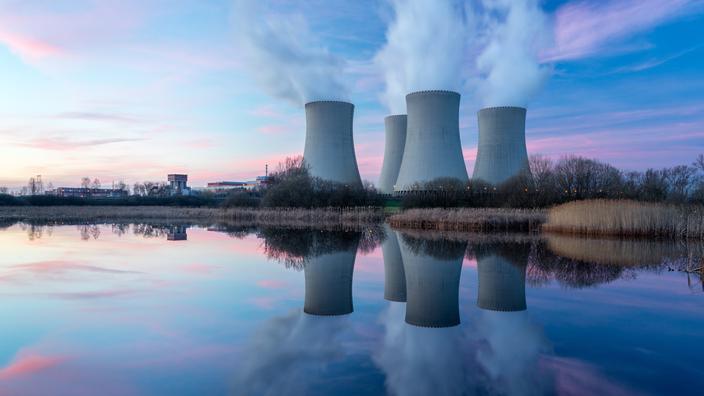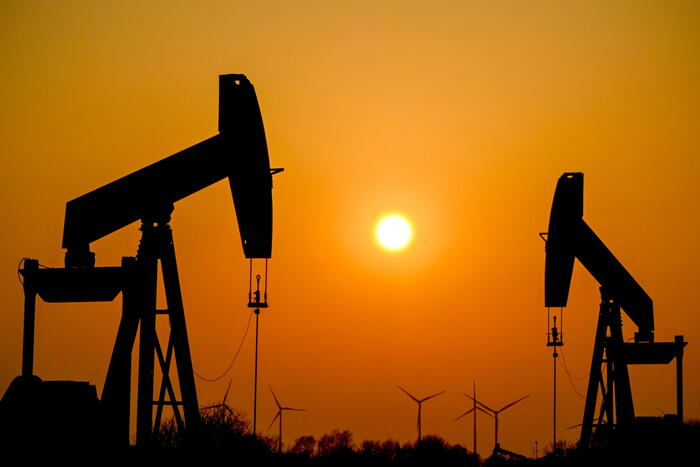Bernard Accoyer, former President of the National Assembly, heads the Nuclear Heritage and Climate (PNC) -France association.
With the onset of winter, France, but also Europe, are surprised to discover that electricity is not a given, an ease.
Its network irrigates us as do our blood vessels, but there still has to be blood.
However, for two decades, the top priority has been the development of intermittent and random renewable electricity production means, wind and solar, and the reduction of controllable production capacities, fossil and nuclear.
However, it has always been known that intermittent energies cannot constitute the robust base essential to the permanent requirement of adjustment between production and consumption.
Read alsoBernard Accoyer: "Energy: let's assume the role of nuclear power"
Currently, as frequently at this time of the year, a prolonged high pressure episode, therefore little wind and little sun, is installed over Western Europe. In France, the situation is worsened by two disruptions: lower availability of nuclear power plants, long planned and announced: the unit outage program was impacted by Covid19 while heavy maintenance operations are required in view of the prolongation of the operation of the reactors; a recent hazard concerning four reactors of the same series at Civaux and Chooz, temporarily reducing production capacity by 6 GWe.
This production deficit must be compared with an energy policy which has freed itself from the realities of physics and ignored the warnings of practitioners. While 31 intermittent gigawatts (GWe) were put into service at great expense (140 billion already committed to produce 10% of our electricity!), Without any guarantee of production, the controllable fleet, the one that ensures our supply at all times, is saw 13% of its capacity cut, or 12.5 GWe in 15 years. Even more surprisingly, the two reactors at Fessenheim, in perfect working order according to the ASN (Nuclear Safety Authority), were shut down, the second in the midst of the COVID crisis, while they were an essential element in the national effort. to limit global warming.Were these disruptions predictable? Essentially yes, except of course for the hazard of the four 1,450 MWe reactors mentioned above.
The law entrusted RTE (Electricity Transport Network) with the task of ensuring the balance of the network, and the CRE (Energy Regulatory Commission) with the task of guaranteeing the proper functioning of the electricity markets. electricity for the benefit of end consumers. Did they do it? We can doubt it, because the need to have sufficient margins to cope with contingencies is not a surprise.
Since 2012, the Safety Authority has sounded the alarm, fearing that one day it will be necessary to arbitrate between safety requirements and the continuity of electricity distribution. Quite recently, before the Parliamentary Office for Scientific and Technological Choices, the President of ASN considered, concerning nuclear reactors, that the next multi-year energy program should
“immediately
ask the question
of going to- beyond 50 years, or even 60 years…, in a transparent and realistic manner, in order to be able to anticipate the decisions to be taken and to maintain sufficient margins for safety ”.
He also came back many times to the fact that, whatever the solutions adopted for the production of electricity in the future, the electricity system would need controllable sources and that it was necessary to decide now and not to procrastinate any longer.
RTE belatedly discovers that the Fessenheim shutdown requires the extension of coal-fired power stations.
Bernard accoyer
While an imperative priority is given to the fight against climate change, RTE discovers belatedly that the Fessenheim shutdown requires the extension of coal-fired power stations. Even more improbable, how could the plan to shut down 14 additional reactors by 2035 (including 4 before 2030) be decided in 2015 and confirmed in 2020 without RTE exposing the authorities to the inevitable consequences? of such an orientation?
CRE is not concerned with getting the many new “energy suppliers” to invest in new controllable resources, as required by law. While to this end, they benefit at low prices from a quarter of EDF's nuclear production, via the Regulated Access to Historic Nuclear Electricity tariff (ARENH), most are simple electricity resellers outrageously favored. , reducing EDF's investment capacities accordingly.
At the same time, the government decides to ban the commissioning of any new gas power plant after that of Landivisiau, an understandable choice with regard to the climate issue but which neglects the risks of power cuts or even blackouts. . As for the new nuclear, after 20 years of all negative decisions, only timid announcements have just been made by the President, but they are slow to materialize, while specialist analysts have been emphasizing for years the need for commitment at the most. early in the construction of new units.
Why did we have to wait to wake up to a surge in energy and electricity prices, caused by more than questionable European governance, resulting in increased dependence on gas? Why French stagnation, when all the signals had been on the red for a long time? Should it come to the obligation to help 5.7 million households this year pay their energy bills, for 1.4 billion?
Some will say that if we had more wind turbines and photovoltaic panels, everything would be fine: the President of CRE has just dared, in front of the SER (Syndicat des Energies Renouvelables). Did he not realize that over several weeks, in November and December, the power delivered by wind turbines and photovoltaics fluctuated during the evening peak hours between only 3 and 6% (load factor) of its theoretical capacity of 31 GWe? What more would we have really obtained, for a few tens of billions of euros more? The data published by RTE reminds us that despite the Covid-19 crisis and a very busy maintenance program, nuclear power produced 83.6% of consumption in mainland France last October (73.6% of production) ,showing a load factor of 67%, despite priority access to the renewable energy network.
France is losing its envied position as a country with the best electricity network in the world, to the point that ENTSOE (group of European regulators) now considers France as the European country in the worst position for the balance of its network during the winter 2021-2022.
This degradation is not the responsibility of EDF but of government officials who, despite the alerts, have decided to reduce the controllable fleet (fossil and nuclear) based on utopian assumptions of consumption reduction and deliberately obscuring the intermittent nature of energies. renewable.
Importing means consuming high carbon electricity.
Bernard accoyer
For more than 40 years, carbon-free nuclear power, with or without Covid-19, has always been very present, even weakened, and has ensured the regular supply of our industry and our fellow citizens.
In these winter high-pressure periods, importing is consuming high carbon electricity.
It is urgent to come back to reality and relaunch an ambitious nuclear program, any delay making our energy future precarious and our climate and environmental commitments illusory.








